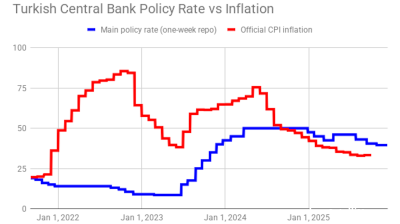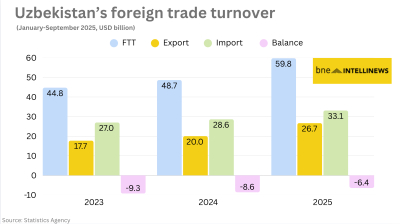At least 22mn fake votes were injected into the Russian presidential election vote count, Russian opposition newspaper Novaya Gazeta reported on March 20.
That was a conclusion by famous Russian mathematician Sergey Shpilkin who has produced statistical studies of several past elections that have exposed blatant vote rigging in all the major elections that have become part of Russian President Vladimir Putin’s election juggernaut, as reported by bne IntelliNews.
According to Shpilkin’s investigation, a whopping 22mn votes were injected into the count, one of the highest levels of vote rigging in post-Soviet Russian history, that delivered Putin a landslide victor with 87.4% of the tally.

Indeed, the number is so high that some have speculated it was more than the Kremlin wanted and was a result of over enthusiastic officials trying to please their masters. Going into the elections the Kremlin said it was aiming for Putin to win 70% to the vote, which it later upgraded to 75% and then 80%, before scaling back to the target to a more modest 75% to keep the result within the bounds of believability. 87% is more than most Central Asian dictators get in elections, with the exception of the bonkers Turkmen President Gurbanguly Berdimukhamedov, who won 97% of the vote in 2017.
Shpilkin scrutinised the data accounting for 97% of the votes processed by the Central Election Commission (CEC), as reported by the Telegram channel Nevybory.
Initially, the analysis suggested that the number of counterfeit votes could be as high as 31.6mn. However, this figure was adjusted after excluding data from Moscow, where the prevalence of online voting complicates the verification of turnout figures.
Shpilkin's methodology compares the actual data with its departure from the statistical average that would be seen from a truly random distribution, a well-developed branch of mathematics.
The method identifies irregularities that suggest ballot box stuffing or the alteration of vote tallies. Under normal circumstances, the distribution of votes for all candidates should align proportionally with voter turnout. However, Shpilkin shows that this relation breaks down and that in regions with higher voter turnout, votes for Putin perform disproportionately well, strongly suggesting there was significant ballot box stuffing in those districts and the Kremlin concentrated its efforts at rigging in the larger regions where it was easier to make a bigger difference to the final outcome.
Ella Pamfilova, head of the CEC, praised the record-breaking turnout, with over 87.1mn Russians, or 77.44% of the electorate, participating in the election, marking an unprecedented level of engagement in the country's electoral history, according to officials.
Data

Turkey's central bank remains cautious, delivers 100bp rate cut
Decision comes on eve of next hearing in trial that could dislodge leadership of opposition CHP party.

Polish retail sales return to solid growth in September
Polish retail sales grew 6.4% year on year in constant prices in September, picking up from a 3.1% y/y rise in August, the statistics office GUS said.

Uzbekistan’s nine-month foreign trade nears $60bn
Export growth of 33% and import expansion of 16% y/y produce $6.4bn deficit.

Hungary’s central bank leaves rates unchanged
National Bank of Hungary expects inflation to fall back into the tolerance band by early 2026, with the 3% target sustainably achievable in early 2027 under the current strict policy settings.




